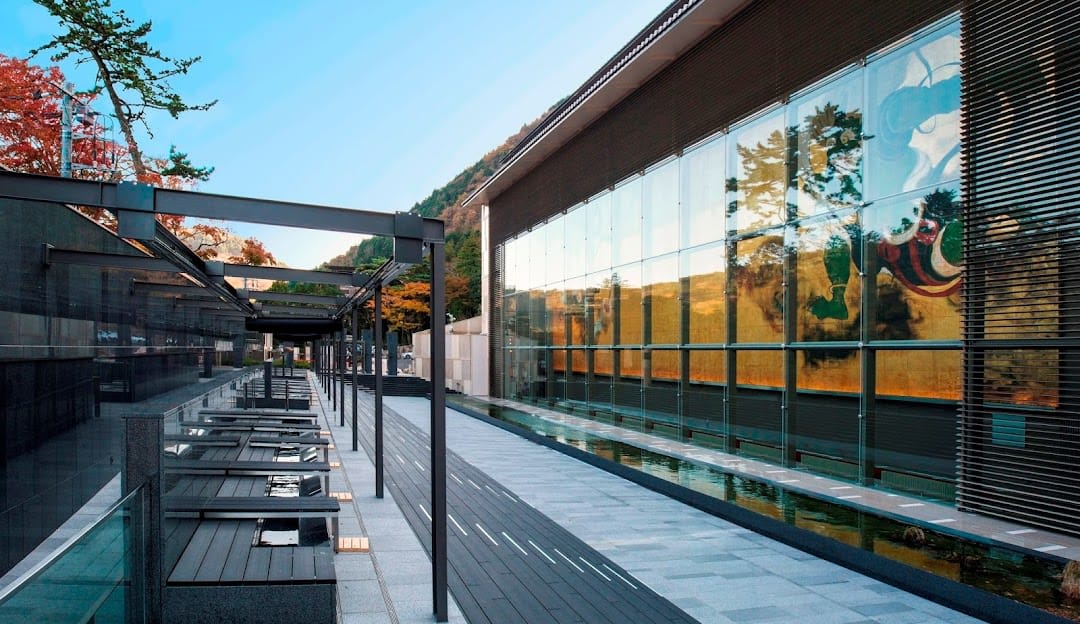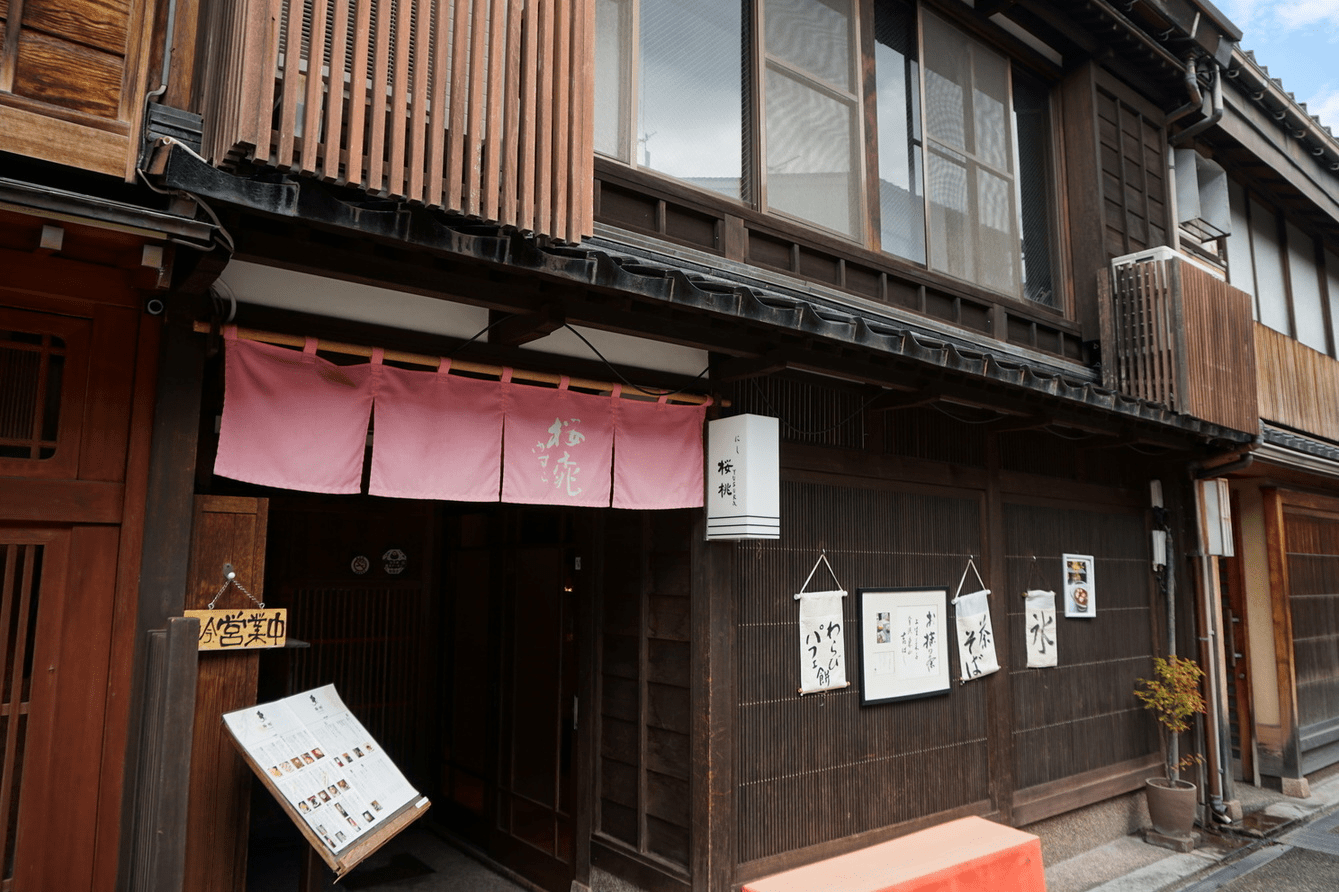The Ultimate Hakone Travel Guide 2025: Must-Visit Spots & Local Tips w/map
Hot springs, nature, art. Hakone in Kanagawa Prefecture has a rare charm where these three elements are in perfect harmony.
If I had to sum up the appeal of Hakone, which I've been visiting for 10 years, in one word, it would be "duality". The gap between the ease of being just 90 minutes from Tokyo and the otherworldly experience you can have there. The unexpected coexistence of centuries-old hot spring culture and world-class contemporary art. And the contrast between the majestic view of Mt. Fuji and the retro Japanese atmosphere lingering in the town.
While Hakone is popular as a tourist destination, it certainly faces challenges such as weekend traffic jams and tourist crowds. However, if you venture a little further, you can find hidden hot springs enveloped in silence. Rainy days have their own hot spring atmosphere, and on cloudy days, the steam from Owakudani becomes even more striking. The ability to enjoy these changing expressions is also one of Hakone's charms.
Hakone has a mysterious appeal that makes you want to "come back again". In this article, I'll introduce the reasons why it has captivated Japanese people since the Edo period and now attracts tourists from all over the world, from the perspective of a local expert.
Throughout Japan, including Hakone, Magical Trip offers guided tours where you can explore local history, traditions, and food culture in depth with local guides.(Hakone Full Day Chartered Private Tour: Art & Nature)
Our most popular tour "Tokyo Bar Hopping Night Tour in Shinjuku" was ranked as Tripadvisor's #1 tour in 2024.

For tourists visiting Tokyo, why not try a private car tour that lets you efficiently visit multiple attractions in a single day? With expert guides who know all the best spots, you can fully experience the region's traditions and rich food culture even in just one day.
These tours include hotel pickup and drop-off service, allowing you to visit attractions stress-free and efficiently. If you're interested in nature-rich destinations like Hakone and want to explore Japan's history and traditions while avoiding crowds, these tours are perfect for you.
・Hakone Full Day Chartered Private Tour: Art & Nature
・Mt. Fuji Full-day Nature Guided Tour with a Private Chartered Car & Guide
Table of Contents
・Basic Information and Charms of Hakone
・How to Access Hakone
・Areas Serving as Bases for Hakone Sightseeing
・Must-See Spots in Hakone
・Enjoying Hakone's Museums
・Enjoying Hakone's Hot Springs
・Hakone's Gourmet Food
・Recommended Sightseeing Routes in Hakone
・Points to Note When Sightseeing in Hakone
・Frequently Asked Questions About Hakone Sightseeing
Basic Information and Charms of Hakone

Hakone is a special place where you can experience an otherworldly atmosphere despite being surprisingly close, just about 90 minutes from Tokyo. What I find particularly charming after visiting for 10 years is its multifaceted nature.
The distance of 85 minutes by Romance Car from Tokyo's Shinjuku Station is especially attractive to overseas travelers. I always enjoy the feeling of leaving the hustle and bustle of the city behind while gazing at the changing scenery from the train window.
Hakone's nature offers new discoveries every time I visit. The majestic figure of Mt. Fuji, the serene surface of Lake Ashi, and the rising steam from Owakudani allow you to experience the power of Japanese nature.
The hot spring culture, which has continued since the Edo period, is Hakone's pride. It's an exceptional experience to soak in a hot spring while reflecting on hundreds of years of history.
And we can't overlook the cultural and artistic aspects of Hakone. It's unparalleled in Japan to have more than seven world-class museums gathered in a hot spring town. I enjoy the splendid harmony of art and nature every time I visit each season.
How to Access Hakone

The method I particularly recommend for accessing Hakone is using the Limited Express Romance Car from Shinjuku Station.
The Limited Express Romance Car connects Shinjuku to Hakone-Yumoto in about 85 minutes, costing about 2,500 yen one way. The special seats with large windows to enjoy the scenery set the stage for the beginning of your trip.
From Tokyo Station, you can arrive in about 100 minutes by combining the Shinkansen and the Hakone Tozan Railway, costing about 4,500 yen one way. For those who want to keep their budget down, using an express bus from Shinjuku is an option. It takes about 120 minutes and costs about 2,500 yen one way, making it an economical choice.
What I especially recommend is the Hakone Free Pass. From Shinjuku Station, it costs 6,100 yen for 2 days and 6,500 yen for 3 days, allowing unlimited travel within the Hakone area. It includes ropeways and sightseeing cruises, making it an essential ticket for those who want to enjoy every corner of Hakone. From my 10 years of experience, with this pass, you can casually visit tourist spots whenever you feel like it without worrying about transportation costs.
Website: https://www.hakonenavi.jp/international/en/discount_passes/free_pass
Areas Serving as Bases for Hakone Sightseeing
Hakone has four main areas, each with its own characteristics. Knowing the charms of each area will help you make a more fulfilling travel plan.
Hakone-Yumoto Area
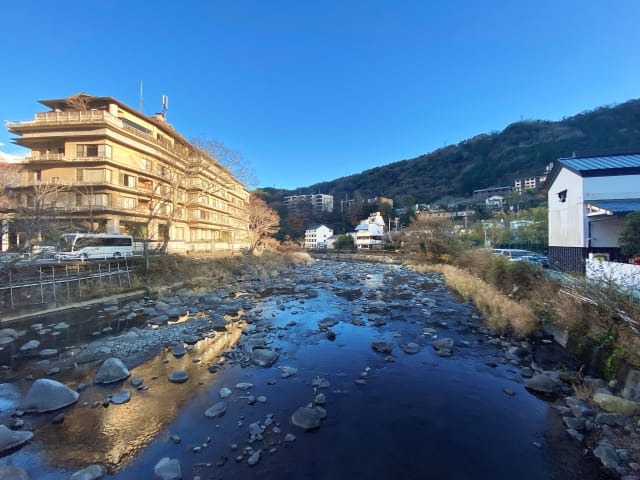
Hakone-Yumoto is a hot spring town that has prospered as the gateway to Hakone since ancient times. Just walking through the townscape that retains its atmosphere from the Edo period allows you to experience Japanese hot spring culture. This is the area I always take my overseas friends to first when I guide them.
The streets are lined with traditional Japanese souvenir shops and eateries, bustling with tourists. There are also many day-trip hot spring facilities, allowing you to enjoy Hakone's hot springs even during a short stay.
It's also important as the starting point of the Hakone Tozan Railway, where a grand journey into the mountains of Hakone begins. The retro station building is also a popular spot for taking photos.
Lake Ashi Area
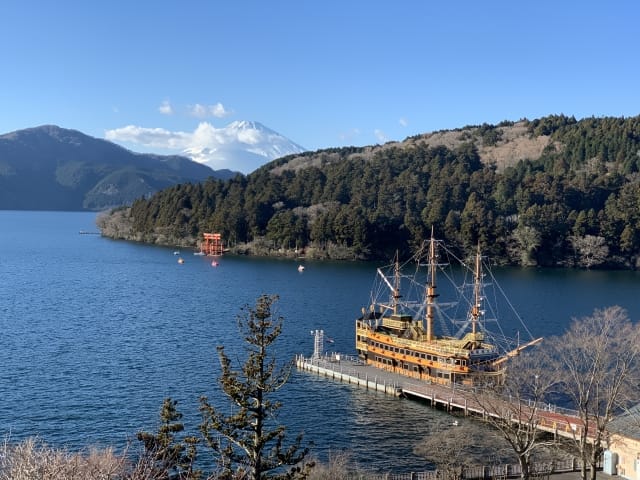
The Lake Ashi area is a representative tourist spot in Hakone. On clear days, it's known as a perfect viewpoint for seeing Mt. Fuji across the lake. I particularly enjoy viewing Mt. Fuji shrouded in morning mist on the quiet lakeside early in the morning.
The sightseeing cruise, designed to look like a pirate ship, is especially popular with foreign tourists. The view of Mt. Fuji and the Hakone mountains from the lake is exceptional.
Historical buildings such as Hakone Shrine and the remains of the checkpoint are also highlights. In particular, the vermilion torii gate standing by the lake is popular as a photo spot symbolizing the traditional beauty of Japan.
Recently, cafes and restaurants along the lakeside have also become more abundant, allowing you to enjoy meals while taking in the view. Cycling roads have also been developed, allowing you to leisurely tour the lakeside by bicycle.
Gora Area

The Gora area is a high-class resort where modern atmosphere and tradition are beautifully harmonized. Known as the terminal of the Hakone Tozan Railway, the contrast between the retro station building and the surrounding sophisticated townscape is impressive. What I particularly like is the open atmosphere unique to this area.
Gora Park, located in the center of the town, not only allows you to enjoy flowers of each season but also offers experiences of traditional crafts such as pottery and woodworking. It's also very convenient for accessing museums, making it an ideal base for enjoying Hakone's culture and art.
The presence of hot spring inns with good views is also a charm of Gora. You can overlook the mountains of Hakone from guest rooms and open-air baths, and the view at dusk is especially spectacular. There are various accommodation facilities ranging from luxury resort hotels to quaint traditional inns.
Sengokuhara Area

The Sengokuhara area is a highland hot spring resort particularly enveloped in tranquility within Hakone. Characterized by its cool climate even in summer due to its high altitude, I especially love the scenery of the pampas grass field in autumn and make sure to visit every year during this season.
Several luxury resort hotels are scattered in this area. Many of them feature spacious gardens and hot spring facilities, allowing for a more authentic Hakone stay. The architectural designs that emphasize harmony with nature are also one of the charms of this area.
If you want to enjoy hiking or nature walks, Sengokuhara is an ideal area. The well-maintained walking paths are safe even for beginners, allowing you to observe seasonal flowers and wild birds. At night, due to less light pollution, you can enjoy a sky full of stars if the weather is good. This is a special experience that you can never have in the city.
Must-See Spots in Hakone
Hakone has numerous attractions where nature and culture are beautifully harmonized. I'll introduce places you absolutely must visit, carefully selected from my 10 years of experience.
Lake Ashi
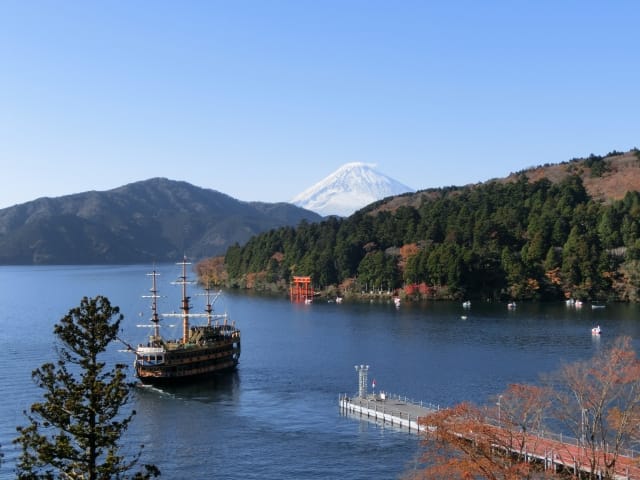
Lake Ashi is known as a representative tourist spot in Hakone. What I particularly recommend is the sightseeing cruise on the pirate ship. The view of Mt. Fuji from the lake is breathtaking, and on a clear day, you can take perfect photos.
There's a well-maintained walking path along the lakeside where you can enjoy a leisurely stroll. Along the way, there are rest spots and photo spots that you'll want to stop at.
Visiting Hakone Shrine is also a valuable opportunity to experience traditional Japanese culture. The contrast between the vermilion torii gate and the blue surface of the lake is especially popular among foreign tourists as a quintessentially Japanese landscape.
Owakudani

Owakudani is a precious spot where you can experience the volcanic activity of Hakone up close. The sight of white steam rising is impressive, and I feel the power of nature every time I visit. My favorite is seeing the contrast between the steam and Mt. Fuji on a clear winter day.
The "black eggs" are a must-try local specialty. These eggs, boiled in the volcanic hot spring, turn black on the shell, and there's a saying that eating one will extend your life by 7 years. When you actually eat it, you'll notice that it's a bit harder than a regular boiled egg and has a unique flavor.
At the Hakone Geomuseum, you can learn in detail about Hakone's volcanic activity. The mechanisms and history of the volcano are displayed in an easy-to-understand manner, allowing you to gain a deeper understanding of Owakudani's landscape.
On clear days, you can see Mt. Fuji from the observation deck, making Owakudani an excellent spot for photography.
Hakone Ropeway

The Hakone Ropeway is a popular attraction that offers an aerial walk to Owakudani. I ride it every season, and each time I make new discoveries. The view from the air provides a special experience that you can never taste on the ground.
From the gondola, you can get a panoramic view of Mt. Fuji and Lake Ashi. You can enjoy completely different scenery depending on the season - fresh green in spring, autumn colors in fall, and snowy landscapes in winter.
There are also many photo spots. Each station has observation decks where you can take pictures while leisurely enjoying the scenery.
Enjoying Hakone's Museums

Hakone is globally recognized as one of Japan's premier art hubs. What particularly impresses me is how each museum maintains its unique character while harmonizing beautifully with Hakone's natural surroundings. The major museums each boast distinctive collections, and their architectural designs and gardens are also noteworthy.
Using the Hakone Free Pass can get you discounts on admission fees to various museums, allowing you to visit more museums.
My recommendation is to tour the museums in the morning and relax in the hot springs in the afternoon. This combination of intellectual stimulation and relaxation, balancing art and hot springs, is a luxurious cultural experience unique to Hakone.
Hakone Open-Air Museum
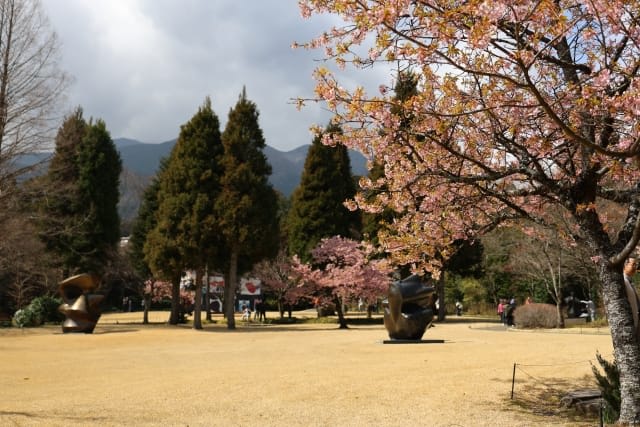
The Hakone Open-Air Museum is a unique outdoor museum where over 400 sculptural works are displayed across a vast 70,000 square meter site. What I particularly like about this place is that despite being a museum, visitors from children to adults can freely touch and enjoy the works.
In the Picasso Pavilion, you can closely appreciate the master's valuable paintings. The foot bath cafe in the museum is a special spot where you can relax while enjoying art, warming your tired feet.
The museum also has well-equipped experience corners for children, focusing on fostering creativity through art. There are numerous photo spots prepared, allowing you to take Instagram-worthy pictures.
Website: https://www.hakone-oam.or.jp/en/
Access: About 35 minutes from Hakone-Yumoto Station on the Hakone Tozan Line (bound for Gora), get off at "Chokoku-no-Mori Station" and walk about 2 minutes. Or, about 3 minutes from Gora Station on the Hakone Tozan Cable Car, get off at "Chokoku-no-Mori Station" and it's right there.
Admission: Adults 2,000 yen, High school/Vocational school/University students 1,600 yen, Junior high school/Elementary school students 800 yen
Pola Museum of Art
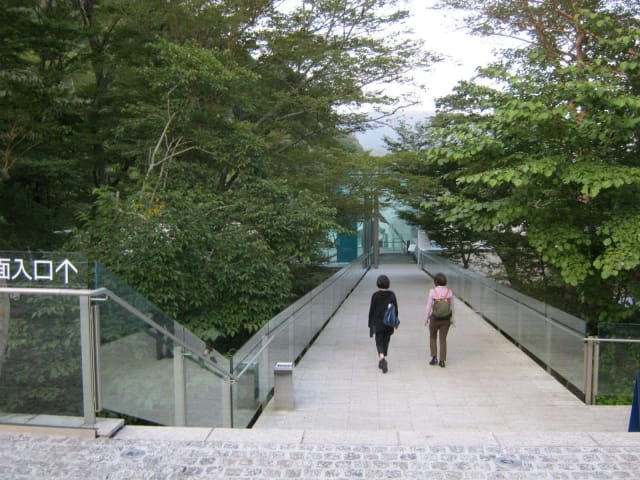
The Pola Museum of Art houses an excellent collection of Western art, centered on Impressionist masterpieces, as well as modern Japanese paintings.
Inside the museum, you can appreciate works by Impressionist masters such as Monet and Renoir up close. The exhibition space, which skillfully incorporates natural light, maximizes the appeal of the works. The collection of modern Japanese paintings is also substantial, providing a valuable opportunity to compare Eastern and Western art.
Walking paths are maintained around the museum, allowing you to enjoy a stroll while feeling Hakone's rich nature.
Website: https://www.polamuseum.or.jp/
Access: About 27 minutes from Hakone-Yumoto Station on the Hakone Tozan Line, get off at "Gora Station", then take the free shuttle bus from parking lot No. 4 near the underground passage.
Admission: Adults: 2,200 yen, University/High school students: 1,700 yen, Junior high school students and younger: Free
Okada Museum of Art
Source: Google Map
The Okada Museum of Art is a museum that widely collects Japanese and Oriental art pieces. It uses its vast 5,000 square meter exhibition space to display works from ancient to modern times with ample room.
My favorite foot bath cafe inside the museum is a luxurious space unique to Hakone's museums. It's loved by many visitors as a rest spot where you can warm your feet while viewing the Japanese garden. The restaurant, which uses a Japanese house from the early Showa period, allows you to enjoy Japanese cuisine while savoring the afterglow of art appreciation.
Website: https://www.okada-museum.com/en/
Access: About 19 minutes from Hakone-Yumoto Station by Hakone Tozan Bus (H line), get off at "Kowakien" bus stop and it's right there.
Admission: General/University students: 2,800 yen, Elementary/Junior high/High school students: 1,800 yen, Garden entrance fee: 300 yen, Foot bath fee: Free for museum visitors / 500 yen for those using only the foot bath
Enjoying Hakone's Hot Springs

Hakone's hot springs are known worldwide for their diversity and high quality. The more than 20 types of natural hot springs each have different efficacies and characteristics, and even after visiting for 10 years, I still make new discoveries.
One of the charms of Hakone's hot springs is that you can enjoy them in various ways, from day trips to luxury inns. The view of Mt. Fuji from open-air baths is particularly popular, and on clear days at dusk, you can watch the sunset over Mt. Fuji while soaking in the hot spring.
Another characteristic of Hakone is the abundance of flowing hot spring sources. By constantly supplying fresh hot spring water, they provide a more authentic hot spring experience.
Also, there are foot bath spots scattered around museums and in town, allowing you to enjoy a bit of hot spring atmosphere between sightseeing. Spring and autumn are particularly excellent times to enjoy hot springs along with seasonal scenery.
Hakone's Gourmet Food
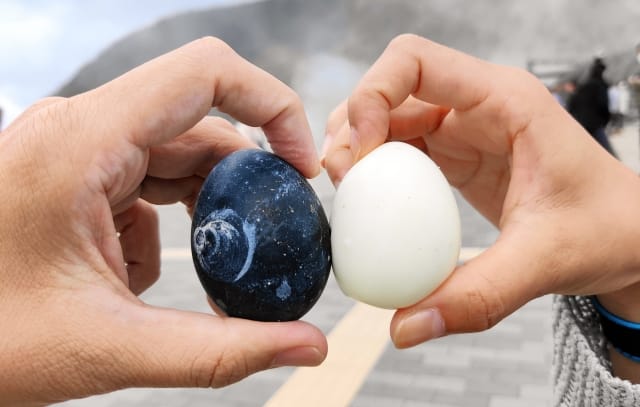
Hakone's gourmet scene has a unique charm that fuses local ingredients with traditional cooking methods. I'll introduce you to the Hakone gourmet discoveries I've made over 10 years.
The "black eggs" from Owakudani are a staple of Hakone tourism. These eggs, which turn black when boiled in the volcanic hot spring, are said to extend your life by 7 years when eaten. Their unique flavor and sulfuric aroma provide an experience unique to volcanic areas.
Tempura made with smelt caught in Lake Ashi is a local dish loved by locals as well. I recommend eating freshly fried tempura at a lakeside eatery. The crispy, delicately fried fish allows you to directly taste the blessings of Hakone's nature.
Yuba (tofu skin) dishes made with Hakone's famous water are also not to be missed. The yuba, created by the clear water and craftsmen's skills, is characterized by its melt-in-your-mouth texture and refined taste. It's often served as part of kaiseki cuisine, allowing you to experience the depth of Japanese food culture.
Hand-made soba can be enjoyed with various local twists in different areas of Hakone. The soba, made with domestic buckwheat flour and carefully kneaded, has a good throat feel and can be enjoyed in various arrangement menus combined with mountain ingredients. It's become my habit to enjoy soba dishes using seasonal local ingredients limited to that time every time I visit each season.
Recommended Sightseeing Routes in Hakone
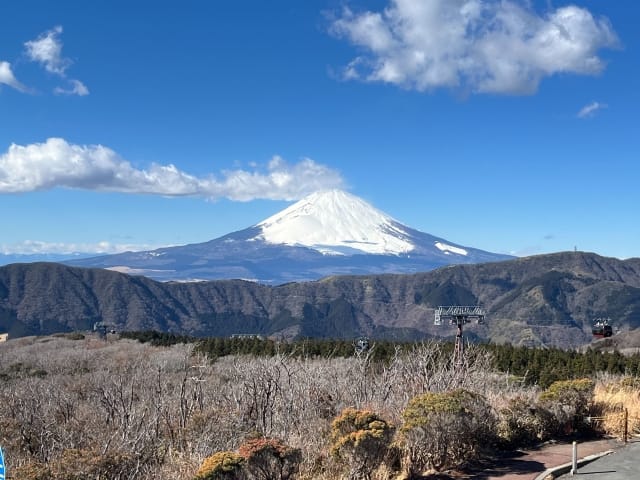
From my 10 years of experience, I'll introduce the most efficient and attractive model course for Hakone sightseeing. This route is designed to provide a balanced experience of Hakone's nature, culture, and hot springs.
For the first day, I recommend a course that starts from Hakone-Yumoto and visits Owakudani and Lake Ashi. After enjoying the morning market in Hakone-Yumoto, take the ropeway to Owakudani. Experience the power of the volcano and taste the famous black eggs. In the afternoon, enjoy a sightseeing cruise on Lake Ashi, and at dusk, you can soak in a hot spring while viewing Mt. Fuji by the lakeside.
For the second day, I recommend visiting museums and exploring Gora. Visit museums early in the morning when they're less crowded and leisurely appreciate the art. Afterwards, you can stroll around Gora town, enjoying local gourmet food and hot springs.
Using the Hakone Free Pass makes these movements smooth. The ropeway and sightseeing cruise are not just means of transportation but essential activities for enjoying Hakone's spectacular views. I recommend making a plan with ample time, considering the travel time between spots. I particularly like to start activities early in the morning to enjoy the quiet time before the tourist crowds increase.
Points to Note When Sightseeing in Hakone

From my experience of visiting Hakone many times, I'd like to share some points to note for a comfortable trip.
Traffic congestion is one of the biggest challenges in Hakone sightseeing. Severe traffic jams occur on main roads, especially on weekends and holidays. I always recommend weekday sightseeing. On weekdays, you can enjoy tourist spots more leisurely, and hot spring facilities are relatively less crowded.
The view of Mt. Fuji is greatly affected by weather conditions. From my experience, clear winter mornings have the highest probability of seeing Mt. Fuji beautifully. However, even on days when Mt. Fuji isn't visible, Hakone has many attractive spots, so I recommend making flexible plans.
It's also necessary to pay attention to the operating hours of tourist spots. Many facilities close around 5:00 PM, so I recommend starting activities from the morning. Especially for museums, visiting early allows you to appreciate the works at a leisurely pace.
Frequently Asked Questions About Hakone Sightseeing
As someone who has been visiting Hakone for many years, I often receive the following questions. I'll provide answers based on my actual experiences for each question.
When is the best season for Hakone sightseeing?
I recommend the autumn foliage season, especially from late October to mid-November. The mountains of Hakone are dyed in red and yellow, and the combination of hot springs and autumn leaves is exceptional. However, this is also the busiest season, so early hotel reservations are necessary.
Spring, from March to April, is also popular as the cherry blossom season. The cherry blossoms in Hakone bloom later than in the city center, so you can enjoy them even after the cherry blossom viewing in Tokyo is over.
Summer is comfortable as a cool retreat. Hakone, with its high altitude, is about 5 degrees cooler than the city center, allowing you to spend time comfortably.
In winter, you can enjoy the contrast between hot springs and snowy landscapes. Especially, soaking in a hot spring while viewing Mt. Fuji covered in snow is exceptional.
Is a day trip possible?
Day trips are definitely possible. I started with day trips myself, and if you use the Hakone Free Pass, you can efficiently visit the main spots. However, I recommend staying overnight to enjoy Hakone more deeply.
I recommend an early morning departure. If you take the Romance Car from Shinjuku around 7:00 AM, you can arrive at Hakone-Yumoto before 9:00 AM. By following the model course, you can have a fulfilling day trip. Hot springs can also be easily enjoyed at day-trip bathing facilities.
How much budget is needed?
For a day trip, including transportation costs, admission fees, meals, and hot spring fees, you can enjoy sufficiently with about 10,000 yen per person.
For a 2-day, 1-night trip, it varies greatly depending on the grade of the accommodation. For a general ryokan or hotel, it's good to budget about 30,000-50,000 yen per person. For high-class ryokans, it can cost over 50,000 yen per person per night.
Museum admission fees average around 2,000 yen. For meals, lunch ranges from 1,000-3,000 yen, and dinner from 3,000-10,000 yen, offering a wide range of options. My recommendation is to balance the budget by having a casual lunch and a more luxurious dinner.
Does English work?
At major tourist facilities, signs and brochures have English translations, so there's no problem with basic sightseeing. High-class hotels have staff who can speak English.
On the other hand, many general restaurants have limited English menus. When I guide friends from overseas, I always recommend having a translation app ready. There are also increasing numbers of restaurants with picture menus, so you can visually choose dishes.
Hakone is a special place where you can experience rich nature, historic hot springs, world-class museums, and more, all within a day trip distance from Tokyo. I've been visiting for 10 years because there are new discoveries every time I visit, and it shows different expressions in each season.
For first-time visitors, I recommend efficiently touring the main spots using the Hakone Free Pass. Then, if you find a place you like, try exploring that area in depth on your next visit. There are still many hidden charms in Hakone that are not well-known.
Nature, culture, gourmet food, hot springs. Hakone, where these elements are beautifully harmonized, is unparalleled as a tourist destination in Japan. I hope you find your own way to enjoy Hakone!

